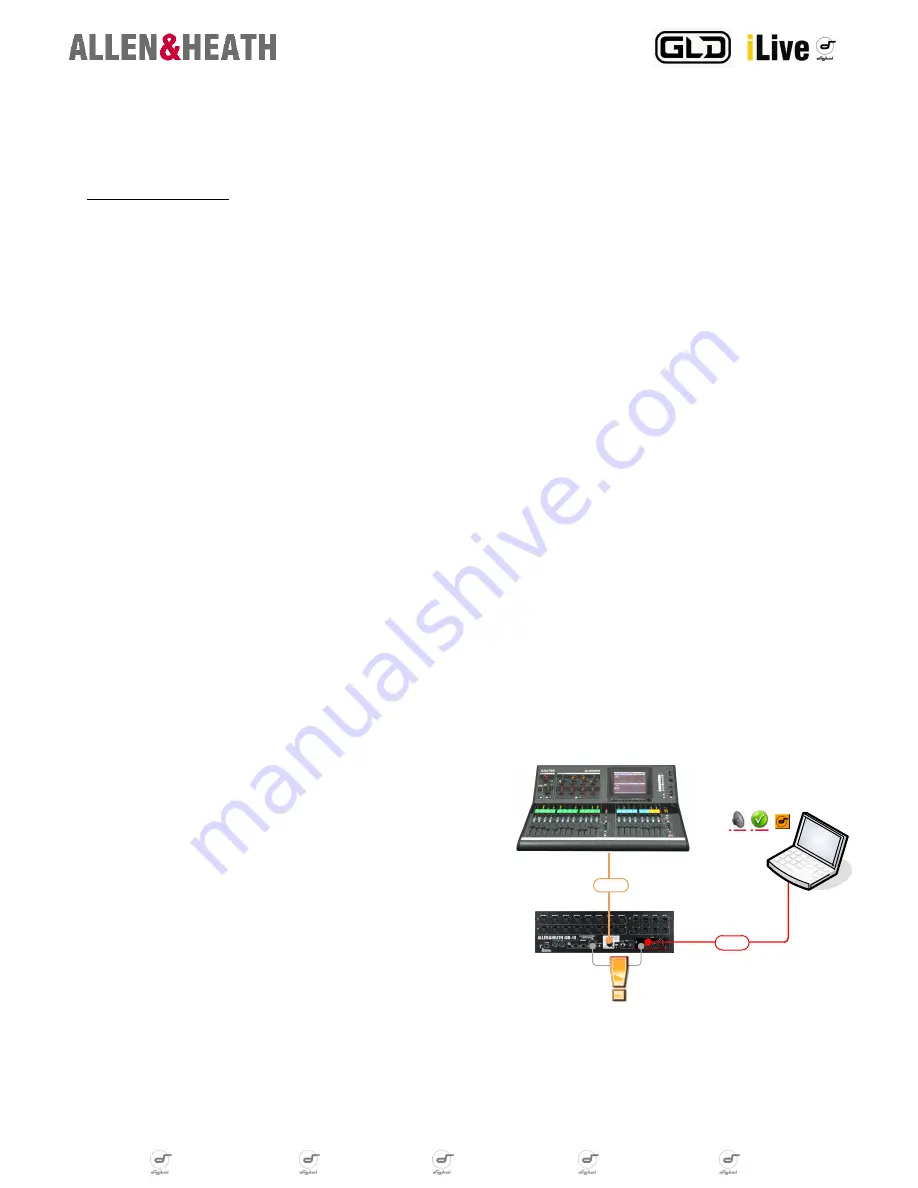
digital notes
digital notes
digital notes
digital notes
digital notes
digital notes
Avoid using Dante Multicast streams
*
when Dante and iLive control are on the same network, as it can slow down metering / operation on
iLive surfaces and Editor.
* Multicast is typically used when an audio channel is sent to multiple receivers at the same time, as it is a more efficient use of available bandwidth than using multiple Unicast
connections. This is achieved by the switch sending copies of the original message to all interested parties.
M-DANTE Networking FAQ
Q:
What does AVB mean?
A: AVB stands for Audio Video Bridging and is a common name for the set of standards in development by the IEEE 802.1 AVB Task Group.
The charter of this organization is to provide the specifications that will allow time-synchronized low latency streaming services through Ether-
net networks. AVB addresses multiple streams in the same network, phase coherency, latency and traffic management. It is fully compatible
with TCP/IP data and non-AVB devices. A Stream Reservation Protocol is used to guarantee enough resources are allocated in each device.
Please visit the AVnu Alliance website for more information: www.avnu.org
Q:
Can I connect Dante ports to an Ethernet network or a LAN?
A: Yes. Dante uses the UDP/IP standard protocol to transmit audio, which is compatible with TCP/IP data. Unlike EtherSound and ACE, you
can transmit audio along with regular IT network traffic. This allows third party Ethernet data such as DMX-over-Ethernet or amplifier/speaker
control systems to be connected within the same Dante network. To prevent bandwidth-related issues please read the ‘Network recommenda-
tions and best practices’ section in this document.
Q:
Can Dante operate over a Wi-Fi network?
A: No. The practical limitations of current wireless technology (802.11a/b/g/n) render reliable performance unachievable.
Q:
Can I sync my iLive or GLD system from an M-DANTE card?
A: Yes. This is typically done when connecting two or more systems together (e.g. front of house / monitor systems).
Q:
Can I use redundant Dante connections with iLive or GLD?
A: Redundant link capability is supported with upcoming firmware V3.5.x or higher.
Q:
Can I use Dante as my iLive surface to MixRack link?
A: Only with modular iLive surfaces and MixRacks equipped with RAB2. You can fit M-DANTE in Port A as your primary audio link, although
the Dante network will need to be manually configured to support the required routing. Channels 1-32 will need to be transmitted between
each device. Ch63-64 need to be routed from the MixRack to the surface for PAFL. Ch64 from the surface needs to be routed to Ch64 of the
MixRack for talkback. The MixRack also needs to be set as the preferred master clock and ‘Slave to External Word Clock’ should be ticked.
Q:
Can I connect two devices directly together?
A: Yes. This can be done for a Port A link between modular MixRacks and Surfaces, or between Port B of any two MixRacks in a split FOH /
Monitor system. When using more devices a Gigabit switch is required to connect all devices on the network in a star configuration.
Q:
Should I bridge my iLive control network into the Dante module?
A: This is desirable only in particular applications such as one-cable connec-
tion when a Port A link is established between modular MixRacks and Surfac-
es, or when a single computer is used for iLive Editor and Dante Controller.
Please note bridging the iLive network over Dante is supported with firmware
V3.5.x or higher.
When the iLive network is bridged into the Dante network, it is not advised to
transmit Dante audio packets over the iLive network and Multicast Dante
streams should be avoided.
Q:
Which version of iLive/GLD firmware do I need before using M-DANTE?
A: iLive version 1.71 upwards, GLD version 1.00 upwards.
Check www.allen-heath.com for the latest version.
For more FAQs and information about Dante, Dante Controller and the Dante Virtual Soundcard, please visit www.audinate.com.
ACE
Editor
Controller
Virtual Soundcard
DANTE
iLive
Requires firwmare
V3.5.X or higher




